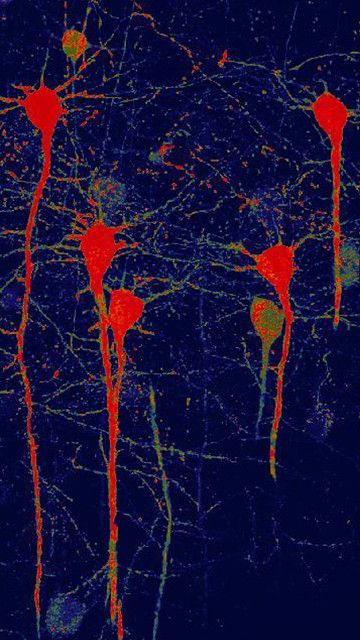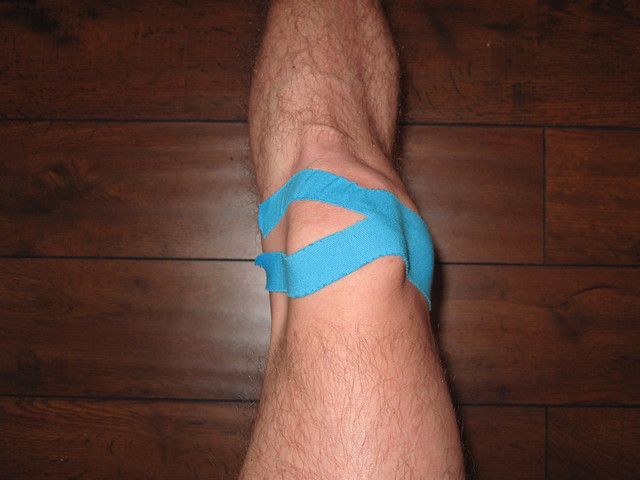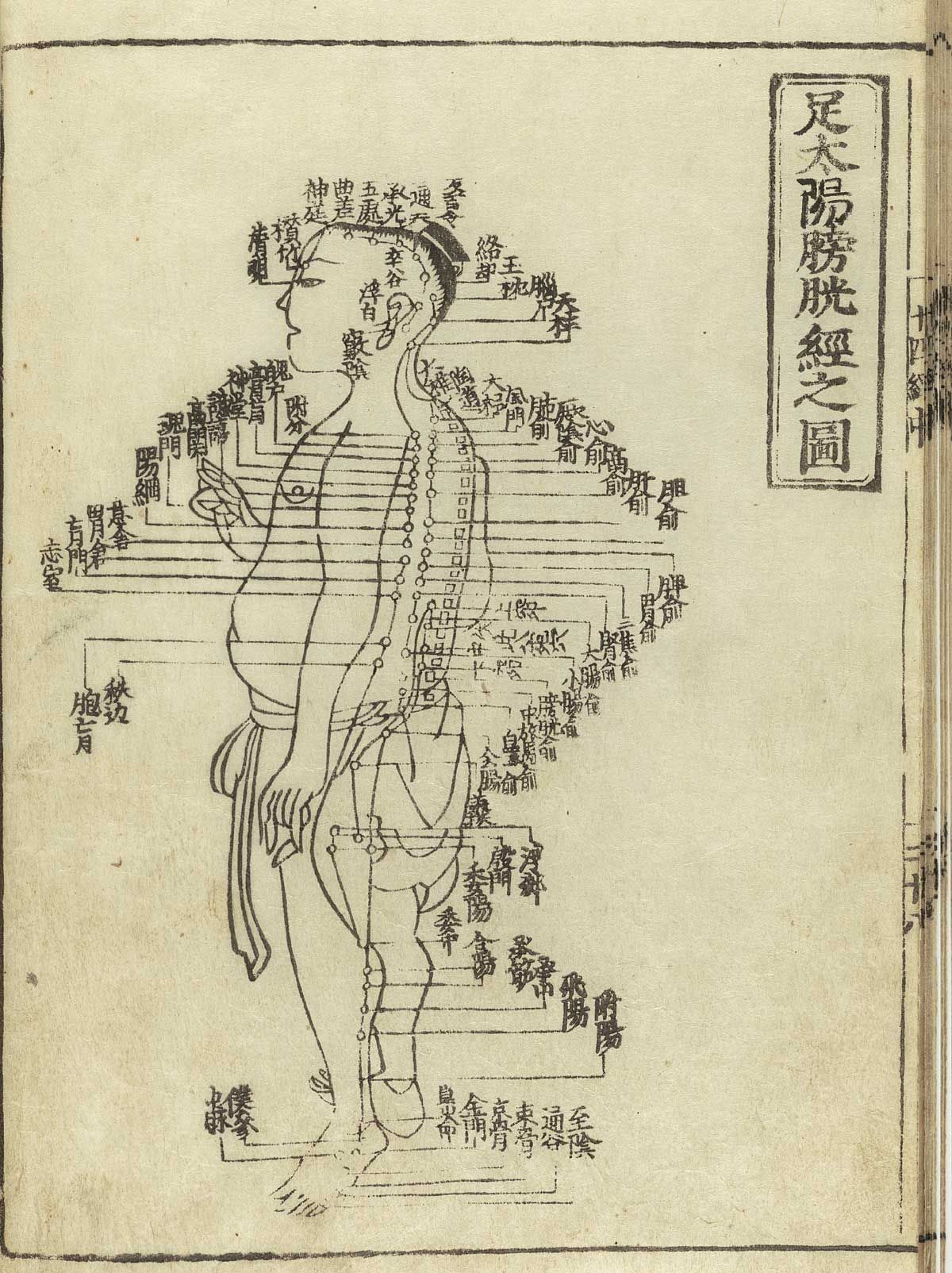Tumeric's Role in TCM
Dr. Ajay Purohit
# Tumeric #Orlando Acupuncture #TCM
Turmeric, the vibrant golden root, is renowned in many healing traditions, including Chinese Medicine. Known as "jiang huang" (姜黄), turmeric has been used for centuries in Chinese herbal practices to address various health concerns, particularly those involving pain, inflammation, and blood stagnation.
From a Traditional Chinese Medicine (TCM) perspective, turmeric is classified as warm in nature, with a bitter and acrid flavor. It primarily acts on the Spleen, Liver, and Stomach meridians, making it an excellent herb for promoting qi (energy) and blood circulation. Blood stagnation, associated with pain, swelling and limited movement, is a common ailment affecting many in the West. Turmeric’s ability to invigorate the blood and move qi makes it a go-to remedy for conditions like arthritis, menstrual discomfort, and injuries.
Turmeric is particularly effective for bi syndrome, a term in TCM that refers to pain caused by obstruction in the meridians. By dispelling wind-dampness and promoting circulation, it helps alleviate joint pain and stiffness, making it invaluable for individuals with chronic inflammatory conditions like rheumatoid arthritis.
In addition to its circulatory benefits, turmeric has a detoxifying effect and can help clear damp-heat from the body. This makes it useful in conditions like jaundice, digestive discomfort, or skin problems such as eczema.
Modern research supports many of these uses, highlighting turmeric's active compound, curcumin, for its anti-inflammatory and antioxidant properties. In TCM, turmeric is rarely used alone; it is often combined with other herbs to create a balanced formula tailored to the individual’s needs.
Clinically, to ensure the most effective use of turmeric depends on proper preparation and dosage by the TCM practitioner.

Luo vessels are an important concept in Traditional Chinese Medicine (TCM), referring to the collateral or network vessels that branch off from the main meridians. They serve as a bridge between the larger primary channels and the body's tissues, organs, and extremities. A main function of the Luo Vessels is to distribute energetic properties (Qi) and blood. That is, Luo vessels help distribute Qi and Blood from the primary meridians into deeper or more superficial areas of the body. Another function they have is to help regulate excesses and deficiencies. They act as reservoirs, absorbing excesses (e.g., heat, stagnation) and replenishing deficiencies. They, also, help in emotional processing. Some Luo vessels, especially the Luo-Connecting points, relate to emotional trauma and psycho-emotional conditions. Additionally, they serve to assist in pathological conditions. When diseases affect the meridians, Luo vessels can become engorged (excess) or drained (deficiency), which can manifest as varicosities, discolorations, pain, or numbness. There are various “categories” of Luo vessels. The Transverse Luo (Connecting) Vessels. These vessels connect paired Yin-Yang meridians (e.g., LU-LI, SP-ST). The Longitudinal Luo Vessels extend further and travel along the course of a meridian. The Great Luo Vessels, such as the Great Luo of the Spleen, affects the whole body’s Qi and Blood circulation. Each primary meridian has a Luo-Connecting point where the Luo vessel branches off. Examples include: LU-7 (Lieque) – Treats exterior syndromes, grief-related lung issues. SP-4 (Gongsun) – Affects digestion, emotional stability, and blood stasis. PC-6 (Neiguan) – Regulates the heart and emotions, calms the mind. GB-37 (Guangming) – Benefits the eyes and treats Liver disharmonies. Luo vessels are often used in cases of chronic pain, emotional trauma, varicose veins, and Qi/Blood stagnation. Many Luo vessels store unresolved emotional trauma, making them useful in treatments related to sadness, anger, or fear. They are also tapped into to help resolve skin and circulatory disorders, such as, eczema, varicosities, and chronic inflammation.

As more of my patients are using herbal therapy to help with their ailments, I am realizing that certain questions continually arise. One such common inquiry concerns my reasoning behind prescribing a certain herbal formula or herb. Without getting too technical in my explanation, I simply tell my patients that I am prescribing herbs based on the “patterns” I currently see. The patient typically follows up with: what does that mean? To a TCM practitioner, a pattern is the fundamental aspect in diagnosing and then creating a subsequent treatment plan. This process is started during the initial intake. I have the patient fill out an intake form and then I perform a tongue and pulse diagnosis to gain additional insight. What insight? The most common patterns seen in TCM include: Blood Stasis, Damp, Heat, Excess, Deficiency, and disharmony between Meridians. Again, it is imperative a TCM practitioner diagnose the correct pattern(s) to treat the patient successfully. After I explain to the patient which pattern(s), I diagnosed, I explain the rational in prescribing the herbal formulas/herbs for him to take. Before continuing, it is important to realize that patterns may change during the treatment process. For instance, a patient maybe diagnosed with Damp Heat initially and thus, treatment, including herbal therapy, is focused on the Damp Heat. However, after a few weeks of treatment, the Damp Heat hopefully is minimized and an underlying pattern such as a deficiency comes to the forefront and, therefore, must be treated with Herbs etc. Again, the feedback from the patient is critical in continually diagnosing the correct pattern and is a point of emphasis I make in treating. Herbal therapy is similar to a Western doctor prescribing medications for a diagnosed condition. However, the primary objective in prescribing herbs is to treat the actual pattern, not just the accompanying symptoms. Unfortunately, m any western drugs are prescribed to just treat the symptoms.

In Traditional Chinese Medicine (TCM), teas have long been used as a gentle yet powerful way to restore balance and support overall health. Unlike Western herbalism, which often focuses on isolated active compounds, TCM views teas as part of a holistic approach to healing, addressing the body’s energy and elemental balance and internal organ systems. As previously noted, teas in Chinese medicine are more than just soothing beverages—they serve as natural remedies to clear toxins, nourish the body, and harmonize internal imbalances. Each tea has unique properties based on its temperature (warming, cooling, neutral), flavor (bitter, sweet, pungent, etc.), and effect on specific organ systems. Lǜ Cha is a common tea that has properties that serve to clear heat, detoxify the body, and support liver function. It is often used to reduce inflammation, aid digestion, and provide gentle energy. Shēng Jiāng Chá) is a warming tea that strengthens digestion, boosts immunity, and dispels cold. It is commonly used for nausea, colds, and poor circulation. Jú Huā Chá is a cooling tea that is beneficial for eye health, headaches, and calming liver heat, which can cause irritability and stress. Pu-erh tea is a tea known for its rich, earthy flavor. Pu-erh tea supports digestion, reduces cholesterol, and warms the stomach. (Gǒu Qǐ Chá is a nourishing tea that benefits the liver and kidneys while improving vision and boosting overall vitality. Again, I must emphasize that in, TCM, these teas are used to actively address a specific ailment(s). Therefore, it is essential to discuss with your TCM practitioner which tea is best to treat your respective ailment.

I continue to have great success in treating patients with the traditional form of Acupuncture, as it is a powerful tool for promoting healing, reducing pain, and restoring balance in the body. However, I, like most TCM practitioners, continue to seek ways to make modalities, such as Acupuncture, even more effective. One “tool” I have recently discovered is Microcurrent therapy. Microcurrent therapy, in the most basic terms, utilizes low-level electrical currents to amplify the benefits of acupuncture. Microcurrent therapy involves the application of extremely low-level electrical currents (in the microampere range) to specific points on the body. Unlike TENS (Transcutaneous Electrical Nerve Stimulation), which uses stronger electrical impulses to block pain signals, microcurrent therapy works at a cellular level to promote tissue repair, reduce inflammation, and enhance circulation. These subtle currents mimic the body's natural bioelectrical activity, making them a perfect complement to acupuncture. Specifically, how Microcurrent Enhances Acupuncture? Microcurrent therapy enhances acupuncture’s ability to reduce pain by improving cellular function and decreasing inflammation. This is particularly beneficial for conditions like sciatic pain, arthritis, and sports injuries. The gentle electrical stimulation increases ATP (adenosine triphosphate) production, the energy currency of cells. This supports faster tissue repair, making it ideal for patients recovering from injuries or chronic conditions. For patients who are sensitive to needles or have a fear of acupuncture, microcurrent therapy offers a painless alternative while still activating acupuncture points effectively. By stimulating meridian pathways with microcurrent, practitioners can achieve deeper energetic balance, improving results for issues like digestive disorders, stress, and hormonal imbalances. Integrating microcurrent therapy with acupuncture has greatly enhanced my acupuncture treatments for both pain and anxiety/stress. It certainly exciting to realize that I am combining both modern technology and ancient medicine to enhance treatment outcomes.

The advancement of Chinese medicine in the United States has been significant over the past few decades, with growing acceptance in mainstream healthcare, increased research, and greater integration with conventional medicine. Acupuncture and Traditional Chinese Medicine (TCM) are now regulated in most U.S. states, with licensing requirements ensuring practitioners meet educational and clinical standards. The National Certification Commission for Acupuncture and Oriental Medicine (NCCAOM) sets national standards for certification. Many hospitals, integrative health clinics, and even VA medical centers now offer acupuncture for pain management, stress relief, and chronic illness treatment. More physicians refer patients to licensed acupuncturists for conditions such as sciatica, migraines, and digestive disorders. Studies funded by institutions like the NIH’s National Center for Complementary and Integrative Health (NCCIH) have provided evidence supporting acupuncture’s efficacy for pain management, anxiety, and even chemotherapy-induced nausea. Acupuncture is recommended by organizations like the American College of Physicians for lower back pain. Some private insurance plans and Medicaid programs in certain states now cover acupuncture for pain management and other conditions. Medicare has approved acupuncture for chronic lower back pain. There are challenges to the growth of TCM. Standardization of herbal medicine remains a challenge due to FDA regulations. More research is needed to fully integrate TCM into hospital systems. Despite the ongoing advocacy for expanding insurance coverage, the Western Medical business is doing all they can to counter any initiatives undertaken by TCM advocates. However, despite this, more Americans are seeking the holistic therapies of TCM.

Aging is a natural part of life, bringing wisdom and experience, but also certain health challenges. As we grow older, our bodies and minds undergo changes that can impact overall well-being. Appreciating these changes is the first step to maintaining a healthier, happier life. Mobility and Joint Pain are two of the common ailments we have, as we age. Joint pain, arthritis, and decreased mobility are common as cartilage wears down over time. Conditions like osteoarthritis can make everyday activities difficult. Regular exercise, a healthy diet, and therapies such as acupuncture can help manage pain and maintain flexibility. Cognitive Decline is another challenge we undergo in the aging process. Memory loss and cognitive challenges, such as dementia or Alzheimer’s, often appear with age. Staying mentally active by way learning new skills can support brain health. Acupuncture, Herbs, proper nutrition, including omega-3 fatty acids and antioxidants, also can help with preventing and managing cognitive decline. Heart disease risk increases as blood vessels stiffen and cholesterol levels rise. Regular Acupuncture sessions, certain herbal formulas, maintaining a balanced diet, and engaging in regular physical activity can significantly help in managing blood pressure and, thus, lower these risks. Osteoporosis is common, especially in women, leading to fragile bones and an increased risk of fractures. Adequate calcium and vitamin D intake, along with weight-bearing exercises, are vital for bone strength. Regular Acupuncture sessions can help as well. In addition, our vision and hearing naturally gets impaired, as we age. Macular degeneration, cataracts, and hearing loss can reduce quality of life. Regular check-ups with eye and ear specialists help in early detection and management. Acupuncture and herbs can help with vision impairment, as well. Finally, mental wellbeing often declines when we get older. Feelings of loneliness, depression, and anxiety can accompany aging. Staying socially connected, practicing mindfulness, and seeking help with Acupuncture, when needed, are essential for emotional well-being.

Knee pain is one of the most common injuries that I treat. Chronic knee pain is usually caused by arthritis, while acute knee pain is due to injury, or overuse. The discomfort from then pain can affect your mobility and quality of life, making even simple tasks challenging. I use acupuncture as the primary way to treat knee pain, as it offers not only a very effective but holistic approach to managing knee pain. Though herbs can be effective in the treatment of more chronic knee conditions, acupuncture is very effective in treating the actual pain. In fact, studies have shown that acupuncture can be particularly beneficial for knee pain caused by osteoarthritis, one of the most common chronic joint conditions. By enhancing blood circulation, acupuncture reduces inflammation, alleviates stiffness, and stimulates the production of endorphins—the body’s natural painkillers. Beyond osteoarthritis, acupuncture can help with knee pain from sports injuries, post-surgery recovery, or repetitive strain. Each treatment is tailored to the individual’s needs, targeting both the root cause and the symptoms. Patients often report improved range of motion, reduced swelling, and long-lasting relief after consistent sessions. As I have written in previous blogs, as a practitioner, the most redeeming quality of utilizing acupuncture is realizing that it is a safe treatment option for most people, with minimal side effects. Unlike medications or surgical interventions, it focuses on encouraging the body’s natural healing processes. Additionally, it can be combined with other therapies for enhanced results. If you are struggling with knee pain, consider trying acupuncture. It not only addresses the physical discomfort but also supports overall well-being by reducing stress and improving energy levels. With regular sessions, you can take confident steps toward a pain-free and active lifestyle.

Electrical stimulation, or electroacupuncture, is a modern enhancement of traditional Chinese medicine (TCM) techniques. By combining acupuncture with low-frequency electrical currents, practitioners amplify the therapeutic effects of the TCM modalities. This innovative approach bridges traditional practices with contemporary science, offering profound benefits for various health conditions. Once the needles are in place, a small device delivers controlled electrical impulses through the needles. The frequency and intensity of the stimulation can be adjusted based on the patient’s needs, ensuring a personalized treatment experience. From a TCM perspective, electrical stimulation helps to release the needed neurotransmitters in the blood. The result is clearing blockages that may cause pain or dysfunction. This is especially effective for conditions like chronic pain, muscle tension, and neurological issues. I have had much success in treating sciatica, arthritis, and low back pain with this technique. From a Western scientific standpoint, electroacupuncture stimulates nerve fibers and muscles, triggering the release of endorphins and other natural painkillers. It can also improve circulation, reduce inflammation, and promote tissue repair. From an TCM perspective, the gentle electrical impulses provide a more consistent and sustained stimulation than manual needle manipulation, which can lead to faster and longer-lasting results. As a TCM practitioner, what I like most about combining acupuncture with electric stimulation is that I know that it is not only effective but also minimally invasive and generally well-tolerated, making it an attractive option for patients seeking alternatives to pharmaceuticals or surgery. Whether addressing chronic conditions or acute pain, electrical stimulation exemplifies how Chinese medicine evolves while staying rooted in its holistic principles. By integrating this method into treatment plans, practitioners empower patients to achieve optimal health and balance in a natural, non-invasive way.

Bi Syndrome (痹证, Bì Zhèng), in Traditional Chinese Medicine (TCM), describes pain and discomfort caused by blockages of “energy” and blood flow in the body's meridians, often triggered by external environmental factors like Wind, Cold, Dampness, and Heat. If you’ve experienced persistent joint pain, stiffness, or swelling, especially during Orlando's humid or chilly seasons, you will appreciate this discussion on Bi Syndrome. In TCM, Bi Syndrome occurs when the body's natural defenses are weakened, allowing environmental factors to invade. One such factor is Wind, which causes pain that shifts between joints or areas of the body. Another factor is Cold which leads to severe, localized pain, often worsened by cold weather or air conditioning—a common factor in Florida homes and offices. In the Orlando area, dampness is a common type of trigger of Bi Syndrome that leads to heaviness, swelling, and persistent aches-often aggravated by Orlando's humid climate. Another key determinant to the Orlando area is heat which results in redness, swelling, and burning sensations, which can mimic inflammatory conditions like arthritis. Stress, poor nutrition, or overexposure to these elements can make the body more susceptible to Bi Syndrome. All the modalities, in TCM, that help treat Bi Syndrome have the purpose of restoring the free flow of key biochemicals and blood while addressing the root cause of the blockage. Acupuncture is very effective because, by targeting specific meridian points, acupuncture reduces inflammation, improves circulation, and eases pain. Herbal Medicine: Customized herbal formulas like Du Huo Ji Sheng Tang or Juan Bi Tang help expel Dampness, Cold, or Heat while nourishing the joints. Many TCM practitioners utilize Moxibustion. This warming therapy combats cold and damp conditions, which are prevalent in Florida's wet winters or indoor environments with excessive air conditioning. Lifestyle changes are often necessary. Avoiding prolonged exposure to cold or damp conditions, incorporating warming, anti-inflammatory foods like ginger and turmeric into your diet, and engaging in gentle exercises such as tai chi or yoga can help in combating the effects of Bi Syndrome.

The extraordinary vessels, or qi jing ba mai, are a unique aspect of Chinese Medicine that go beyond the regular meridian system. These eight vessels serve as reservoirs of energy and have profound roles in balancing, storing, and regulating qi (vital energy) and blood. Unlike the primary meridians, they do not directly correspond to specific organs, allowing them to add meaningful depth to the existing channel system. The extraordinary vessels include the Du Mai (Governing Vessel), Ren Mai (Conception Vessel), Chong Mai (Penetrating Vessel), Dai Mai (Belt Vessel), Yin Qiao Mai, Yang Qiao Mai, Yin Wei Mai, and Yang Wei Mai. Together, they form a comprehensive network that can aid in our physical, emotional, and spiritual health wellbeing. These vessels are often called upon when imbalances are deeply rooted or multifaceted, as they connect different parts of the body and harmonize energy flow. For instance, the Chong Mai is associated with the "Sea of Blood" and can address menstrual issues, while the Dai Mai acts as a stabilizing force, influencing conditions like abdominal distension or back pain. The Du Mai and Ren Mai, often paired in treatment, are used to support growth, reproduction, and vitality. From a modern perspective, the extraordinary vessels can address chronic and complex conditions such as hormonal imbalances, emotional trauma, and even unresolved past injuries. Treatments often involve acupuncture, focusing on initiating the release of the necessary biochemicals. These vessels provide a pathway for practitioners to delve deeper into a patient’s overall health, offering opportunities for profound healing. Understanding and utilizing the extraordinary vessels allows Chinese Medicine to serve as both an ancient art and a modern, transformative practice for healing.






